Carlo Scarpa in Venice
With the aim of promoting the works of Carlo Scarpa in the area, Ca' Foscari University of Venice, IUAV University of Venice, Fondazione Querini Stampalia Onlus and FAI – the National Trust for Italy signed an agreement aimed at promoting projects and events for citizens and beyond.
With the Ca' Foscari Tour, it is possible to visit one of the marvellous architectural works created by Carlo Scarpa, i.e., the Aula Mario Baratto
The project
In March 2019, a “Framework Agreement” was signed between Ca' Foscari University of Venice, IUAV University of Venice, Fondazione Querini Stampalia Onlus and FAI – the National Trust for Italy for a collaboration aimed at enhancing the works of Carlo Scarpa housed in their respective premises or managed by them.
Among the objectives of the agreement is the possibility of coordinating cultural initiatives dedicated to the Venetian architect between the different institutions, ensuring greater circulation of information and promoting ongoing activities with the aim of involving citizens and especially students, promoting their participation in the events.
In order to ensure a more widespread and knowledgeable understanding of Carlo Scarpa's works in the Venetian venues involved in the agreement, “open” days have been set up, aimed in particular at students, who will be guided in visiting Scarpa's works through itineraries between the Olivetti shop, Fondazione Querini Stampalia, Fondazione Masieri and Ca' Foscari University of Venice.
Locations that are difficult to access, such as Fondazione Masieri and the Aula Baratto at Ca' Foscari, will be open to the public on those days, making it possible to visit usually unseen and significant spaces designed by the architect.
The agreement signed by the four institutions involved also envisages the coordinated organisation and management of cultural events (exhibitions, conferences, debates and seminars) aimed at students and the general public, together with joint publishing initiatives aimed at raising awareness of and enhancing the works of Carlo Scarpa.
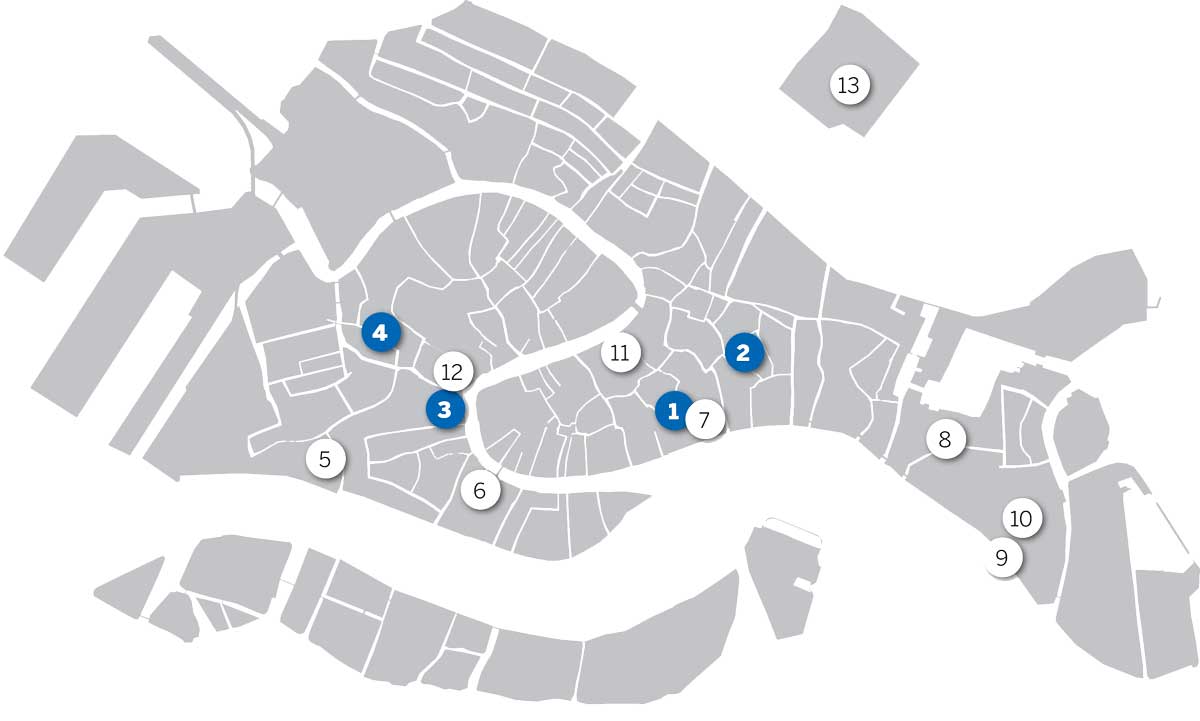
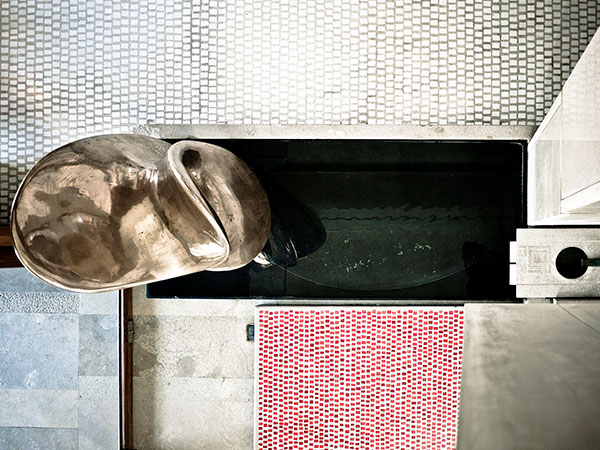
Olivetti Shop
The Olivetti shop was commissioned by Adriano Olivetti and designed by Carlo Scarpa in 1958. It was not intended to be an actual typewriter shop, but a showroom, a “business card”, in the words of the client himself, an exhibition point that embodied the pursuit of quality by the company from Ivrea. Making the most of the limited space available in the Procuratie Vecchie of Piazza San Marco, the Venetian architect created a spacious, transparent space. Thanks to Scarpa’s design, modernity and Venetian tradition coexist in great harmony in the shop, creating one of the clearest masterpieces of contemporary architecture, according to the definition of critic Carlo Ludovico Ragghianti
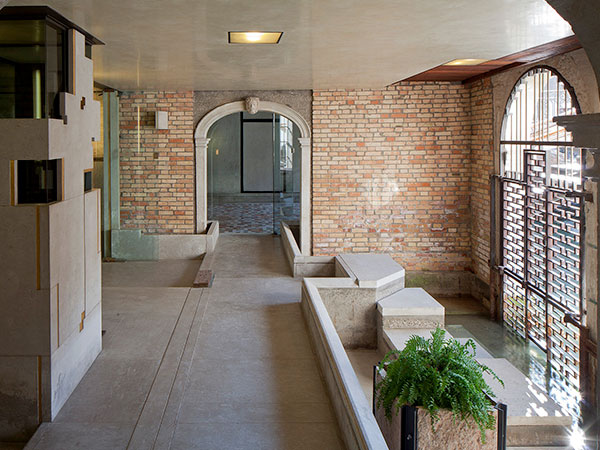
Fondazione Querini Stampalia
Water and light: these are the protagonists of the architectural space redesigned by Carlo Scarpa between 1959 and 1963.
The aim was to make 19th-century rooms that had previously been used as warehouses available, and to create an area for temporary exhibitions and meetings. The renovation was based on a measured combination of old and new, a skilful use of materials dear to Venetian architecture, and continuous research and experimentation on detail. The water enters the building, and the light reverberated by water vibrates and refracts on the ceilings, becoming colour. The garden is an enchanted, surprising space. It features a basin in copper, cement and mosaic, a small canal between two sculpted labyrinths, where water becomes sound and movement; a well of the old house, a Gothic lion, and capitals, all skilfully placed by the master. Once again, ancient and modern, past and present are brought together.
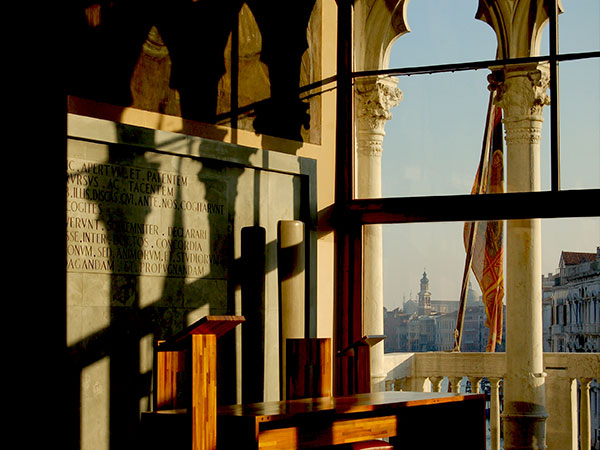
Ca' Foscari University of Venice
The historical headquarter of Ca' Foscari University, a prestigious palace built by Doge Francesco Foscari in 1452, houses two major interventions by Venetian architect and designer Carlo Scarpa.
In 1935, 30-year-old Carlo Scarpa was asked to contribute to the renovation of one of the landmarks of his beloved Venice: Ca' Foscari. To replace the University's Museum of Merceology, he designed the Great Hall (whose new layout dates back to 1955), now named after Mario Baratto. Decorated with two large mural paintings, Venice, Italy and the Studies by Mario Sironi and The School by Mario De Luigi, the room is an innovative masterpiece. The original wooden platform with sliding blocks and the marble slab framed by two imposing pedestals stand out. However, the true heart of the entire composition is the extensive Gothic polyphora, framed by the wooden frame with horizontal lines.
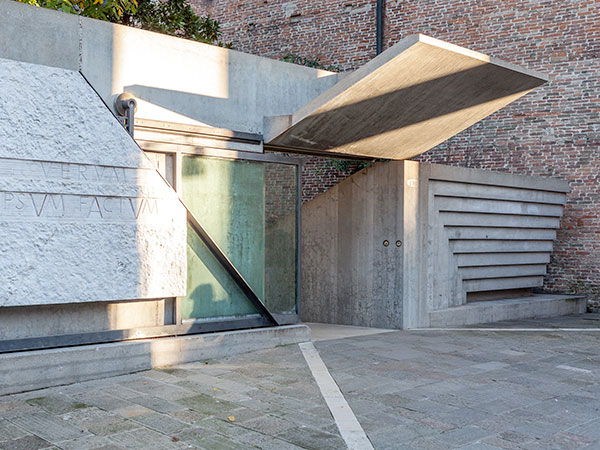
IUAV University of Venice
The main campus of IUAV University of Venice is currently housed in the Tolentini building complex near Piazzale Roma and includes the church convent, the overall design of which dates back to the late 16th century and is the work of Vincenzo Scamozzi. Over time, Carlo Scarpa proposed various projects for its redevelopment, including the design of the entrance, which he started thinking about in 1967. The architect worked on this project for over ten years, studying an outline project whose realisation would be entrusted to architect Sergio Los after his death (Sendai, 1978).
Other pubblic places
San Sebastiano
Gallerie dell’Accademia
Museo Correr
Padiglione Venezuela, Giardini della Biennale
Monumento alla Partigiana
Giardino delle sculture e Biglietteria, Giardini della Biennale
Aula Manlio capitolo, Tribunale ordinario di Venezia
Fondazione Angelo Masieri
Tomba Capovilla, Cimitero di San Michele in Isola
The contact persons of the four institutions for the activities under the agreement are:
- Veronica Gusso, from the Cultural Promotion Office of Ca' Foscari University of Venice
- Maria Bonaiti, Professor of History of Architecture, IUAV University of Venice
- Tiziana Bottecchia, Fondazione Querini Stampalia
- Elisa Genna, del FAI – Fondo Ambiente Italiano
| Accordo quadro [ITA] | 186 K |

